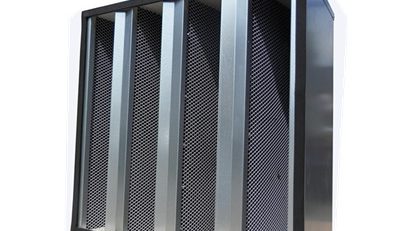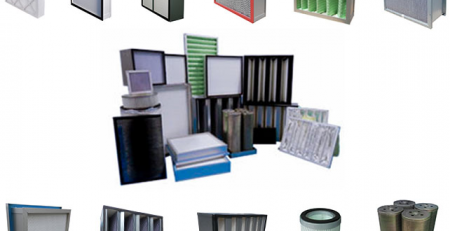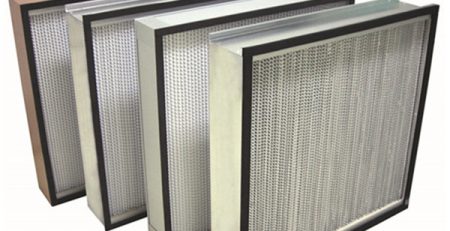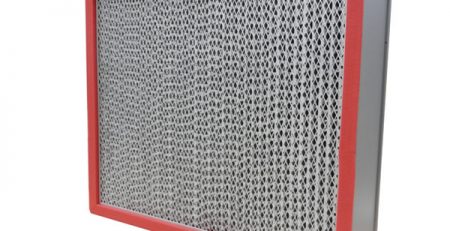Filtration Principles
Filtration of particles relies on four main principles: (1) inertial impaction, (2)interception, (3) diffusion, and (4) electrostatic attraction. The first three of these mechanisms apply mainly to mechanical filters and are influenced by particle size.
inertial impaction
1) Impaction occurs when a particle traveling in the air stream deviates from the air stream (due to particle inertia) and collides with a fiber. Generally impaction filters can only satisfactorily collect particles above 10 microns in size and therefore are used only as pre-filters in multi-stage filtration systems. The higher the velocity of air stream, the greater is the energy imparted to the particles and greater is the effectiveness of the principle of impaction.
interception
2) Interception occurs when a large particle, because of its size, collides with a fiber in the filter that the air stream is passing through. In this method, particles are small enough to follow the air stream. The particles come in contact with the fibers and remain “stuck” to the fibers because of a weak molecular connection known as ‘Vander-Waals’ Forces.
diffusion
3) Diffusion occurs when the random (Brownian) motion of a particle causes that particle to contact a fiber. Diffusion works with very small particles and works in HEPA and ULPA filters. The particles are so small that they move in a random motion causing the particle to acquire a vibration mode. Because of this vibration mode, the particles have a good chance of coming in contact with the fibers. The smaller the particle, the stronger this effect is. For large particles, over one micron in diameter, this filtration mechanism has virtually no effect. In the order list above, the most critical areas lie between interception and diffusion. Impaction and interception are the dominant collection mechanisms for particles larger than 1 µm, and diffusion is dominant for particles smaller than 1 µm.
electrostatic attraction
4) Electrostatic attraction, the fourth mechanism, plays a very minor role in mechanical filtration. If a charged particle passes through an electrostatic field, it is attracted to an oppositely charged body. Such charges can be generated and imparted to particles in an airstream in much the same way as static charges develop during the combing of one’s hair or just walking across a rug. The typical electrostatic air filter is made from polyester or polypropylene strands that are supposedly charged as the air passes through them. Whether particle charges are induced by applying energy to a dirty airstream or occur naturally, they can be valuable tools in increasing air cleaning effectiveness.






